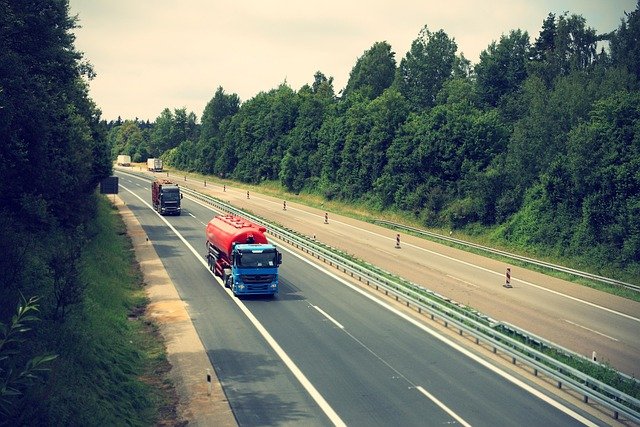Driving and Transport Roles Across Japan’s Workforce
Driving-related work in Japan covers a wide range of fields, including parcel and goods delivery, passenger transport by taxi or bus, long-haul trucking, forklift operation in warehouses, and shuttle driving for companies or hotels. Each role comes with its own environment, schedule patterns, and skill requirements. While certain positions require specific licenses or prior experience, others focus more on reliability, route familiarity, and safe driving habits. Urban areas may involve navigating dense traffic and complex routes, while regional positions often include longer distances and a greater emphasis on local geography. Many employers provide training or structured onboarding to help new hires adapt to workplace standards. Understanding the type of driving involved, the work environment, and expectations around punctuality and safety can help applicants find a role that fits both their abilities and lifestyle.

What Are the Different Types of Driver Roles and Their Main Responsibilities?
Japan’s transport industry encompasses several distinct driving categories, each with unique duties and requirements. Taxi drivers navigate urban streets and provide passenger transportation services, requiring excellent customer service skills and local geography knowledge. Delivery drivers handle package distribution for companies like Yamato Transport and Sagawa Express, managing route optimization and customer interactions.
Truck drivers operate various vehicle sizes, from small commercial vehicles to large freight trucks. Long-distance drivers transport goods between cities and prefectures, while local drivers focus on regional deliveries. Bus drivers work for public transportation systems or private tour companies, ensuring passenger safety and maintaining schedules. Each role demands specific skills, from mechanical knowledge to customer relations.
Understanding Licensing and Permit Requirements for Driving Jobs in Japan
Professional driving in Japan requires specific licensing beyond standard personal vehicle permits. The普通自動車運転免許 (regular automobile license) serves as the foundation, but commercial roles often need additional certifications. Medium-sized truck operations require a 中型免許 (medium-size license), while large vehicles need a 大型免許 (large-size license).
Taxi drivers must obtain a 二種免許 (Type 2 license), which includes additional training and testing focused on passenger safety and professional driving standards. Bus drivers need similar Type 2 certification appropriate for their vehicle class. Foreign drivers can convert international licenses through specific procedures, though requirements vary by country of origin. Regular health examinations and clean driving records are essential for maintaining professional driving credentials.
Key Differences Between Urban and Rural Driving Conditions
Urban driving environments in cities like Tokyo, Osaka, and Yokohama present unique challenges including heavy traffic, narrow streets, and complex navigation systems. Drivers must master efficient route planning, parking in limited spaces, and handling frequent stops. Urban delivery drivers often work with tight schedules and high-density drop-off points.
Rural driving involves different considerations, including longer distances between destinations, mountainous terrain, and seasonal weather challenges. Rural drivers may encounter less traffic but must navigate unmarked roads and handle larger delivery areas. Winter conditions in northern regions require special skills and equipment. Rural positions often offer more consistent routes but may require greater geographical knowledge of local areas.
Training and Onboarding Processes for New Drivers
Most Japanese transport companies provide comprehensive training programs for new drivers. Initial orientation covers company policies, safety protocols, and customer service standards. Practical training includes route familiarization, vehicle operation specific to company equipment, and technology systems used for dispatch and tracking.
Training duration varies by role complexity, typically ranging from one week for basic delivery positions to several months for specialized freight operations. Experienced drivers often serve as mentors during the onboarding period. Companies emphasize safety training, including defensive driving techniques and emergency procedures. Many employers provide ongoing education opportunities and safety refresher courses throughout employment.
Workplace Culture in Japan’s Transport and Delivery Sectors
Japanese transport companies maintain traditional workplace values including punctuality, respect, and teamwork. The concept of “omotenashi” (hospitality) extends to customer interactions, emphasizing polite service and attention to detail. Drivers are expected to maintain professional appearance and follow established protocols consistently.
Many companies foster team-oriented environments despite the independent nature of driving work. Regular meetings, safety discussions, and social events help build relationships among staff. Seniority systems remain common, with experienced drivers receiving preference for preferred routes or schedules. Work-life balance varies by company and role, with some positions offering flexible scheduling while others require strict adherence to delivery windows.
| Role Type | Average Monthly Salary | Key Requirements |
|---|---|---|
| Taxi Driver | ¥200,000-¥350,000 | Type 2 license, local knowledge |
| Delivery Driver | ¥250,000-¥400,000 | Regular license, customer service skills |
| Truck Driver (Local) | ¥280,000-¥450,000 | Medium/Large license, physical stamina |
| Long-Distance Truck Driver | ¥350,000-¥550,000 | Large license, overnight travel capability |
| Bus Driver | ¥300,000-¥500,000 | Type 2 license, passenger safety training |
Prices, rates, or cost estimates mentioned in this article are based on the latest available information but may change over time. Independent research is advised before making financial decisions.
Career Advancement and Long-Term Prospects
The Japanese transport industry offers various advancement opportunities for dedicated drivers. Experienced professionals may progress to supervisory roles, training positions, or fleet management. Some drivers establish independent operations or franchise agreements with established companies. The growing e-commerce sector continues creating demand for skilled delivery professionals.
Technological integration, including GPS systems and automated dispatch, has modernized the industry while maintaining demand for human drivers. Electric and hybrid vehicles are becoming more common, requiring additional training but offering environmentally conscious career options. The aging population and labor shortages in some regions have created favorable conditions for job seekers in the transport sector.
Japan’s transport and driving sector provides stable employment opportunities across diverse roles and environments. Success requires proper licensing, cultural adaptation, and commitment to professional standards. While challenges exist, including traffic congestion and weather conditions, the industry offers competitive compensation and advancement potential for dedicated professionals. Understanding specific role requirements and workplace expectations helps candidates make informed career decisions in this essential sector of Japan’s economy.




